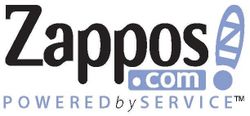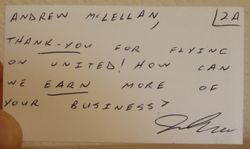Don’t play chicken with your pricing
November 23, 2009
 Remember the old game? You'd aim your bike or your car at another bike or car and barrel towards each other. Whoever swerved before the collision was "the chicken."
Remember the old game? You'd aim your bike or your car at another bike or car and barrel towards each other. Whoever swerved before the collision was "the chicken."
Lots of businesses play the same game with their pricing. They lock on with a prospect and offer up their price. The prospect says something to the effect of…."we really want to buy it, but that's a little expensive. What can we do about the price?"
The metaphorical headlights are in your eyes. You want the sale. You know you can do the job well. So maybe if you knock a few dollars (…or hundreds, or thousands) off, you can earn their business and prove to them how good you are.
Stop right there.
If you do that once, you'll be asked to do it every time. By playing chicken and being the one to swerve, here's what you've communicated to the potential buyer:
- My prices aren't firm — you should always negotiate
- I wasn't being as fair with you as I could have been…I had some pad in my pricing
- I don't have enough confidence in my product/service to sell it for full price
- We don't believe in our own brand — we're willing to compete on price
Do you really want to communicate any one of those things to your clients and prospects? I doubt it.
Instead, here's how to handle price objections.
First — price fairly. To them and to you. Be confident that you can over deliver on the price paid and be a genuine value. Don't price to be a loss leader or get in under the other guys. Charge what you are worth but with a nod of consideration to the market and being competitive.
Second — never apologize or over justify your price. You can't do either without sounding defensive and you have nothing to be defensive about. And once you've lowered your price — you will never be able to charge full price again.
Third — acknowledge their concern by helping them stay within budget. Try something like…."I completely understand your budget constraints. If you only have $5,000 to spend, let's look at our proposal and see what we can modify (# of options, turnaround time, features, add ons, etc.) to get you down to your ceiling." In other words….take something away or somehow modify your proposal to accommodate their budget.
This is you respecting your original pricing AND respecting their checkbook. In our experience, 90% of the time, you will not lose the sale. They'll either opt for your modifications at their reduced budget (if their budget constraint are real) or they'll end up accepting your original proposal (if they were using budget as an excuse to try to get you to reduce your price.)
Fourth — recognize that sometimes this is your brand's way of helping you recognize that this is not a good customer for you. If you just can't make the numbers work for them — they aren't your customer. Be gracious and if you want, even suggest some lower cost alternatives.
Bottom line is — don't de-value your work by playing chicken with your pricing. If you are good at what you do, about 20-30% of the time — people should push back on your prices a little.
I have a very successful friend whose philosophy is…"I want them to gulp a little when they hire us. We're an investment, not a commodity. Then it's our responsibility to make sure they come to believe their investment was a wise one."
More


![Reblog this post [with Zemanta]](http://img.zemanta.com/reblog_e.png?x-id=6ea8318e-842f-485c-8d9b-231a4e0b05b2)

![Reblog this post [with Zemanta]](http://img.zemanta.com/reblog_e.png?x-id=5735044c-c948-4a39-b6f6-8b062c781d56)

![Reblog this post [with Zemanta]](http://img.zemanta.com/reblog_e.png?x-id=258eeb02-65ff-499d-beb2-937eb036b411)

![Reblog this post [with Zemanta]](http://img.zemanta.com/reblog_e.png?x-id=3af66130-6d56-4d38-aa06-91ea34cd5d45)

![Reblog this post [with Zemanta]](http://img.zemanta.com/reblog_e.png?x-id=f7e0e9e6-a7ad-4f22-a72d-7e91afc80b7e)

![Reblog this post [with Zemanta]](http://img.zemanta.com/reblog_e.png?x-id=d248db0a-38e4-451f-821f-512e61fefc4e)

![Reblog this post [with Zemanta]](http://img.zemanta.com/reblog_e.png?x-id=94a0f49c-b587-40f1-a7db-9bb769b7a9af)

![Reblog this post [with Zemanta]](http://img.zemanta.com/reblog_e.png?x-id=047b125e-1bd4-43bb-9b5f-b5d4fcd40985)
![Reblog this post [with Zemanta]](http://img.zemanta.com/reblog_e.png?x-id=aba2c578-c405-48ca-b3e0-f3d531587038)